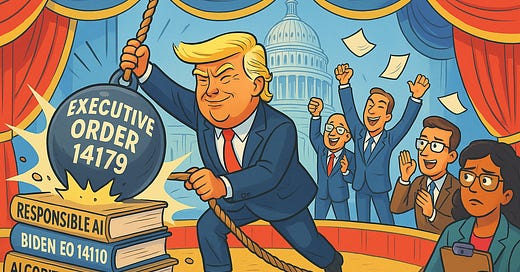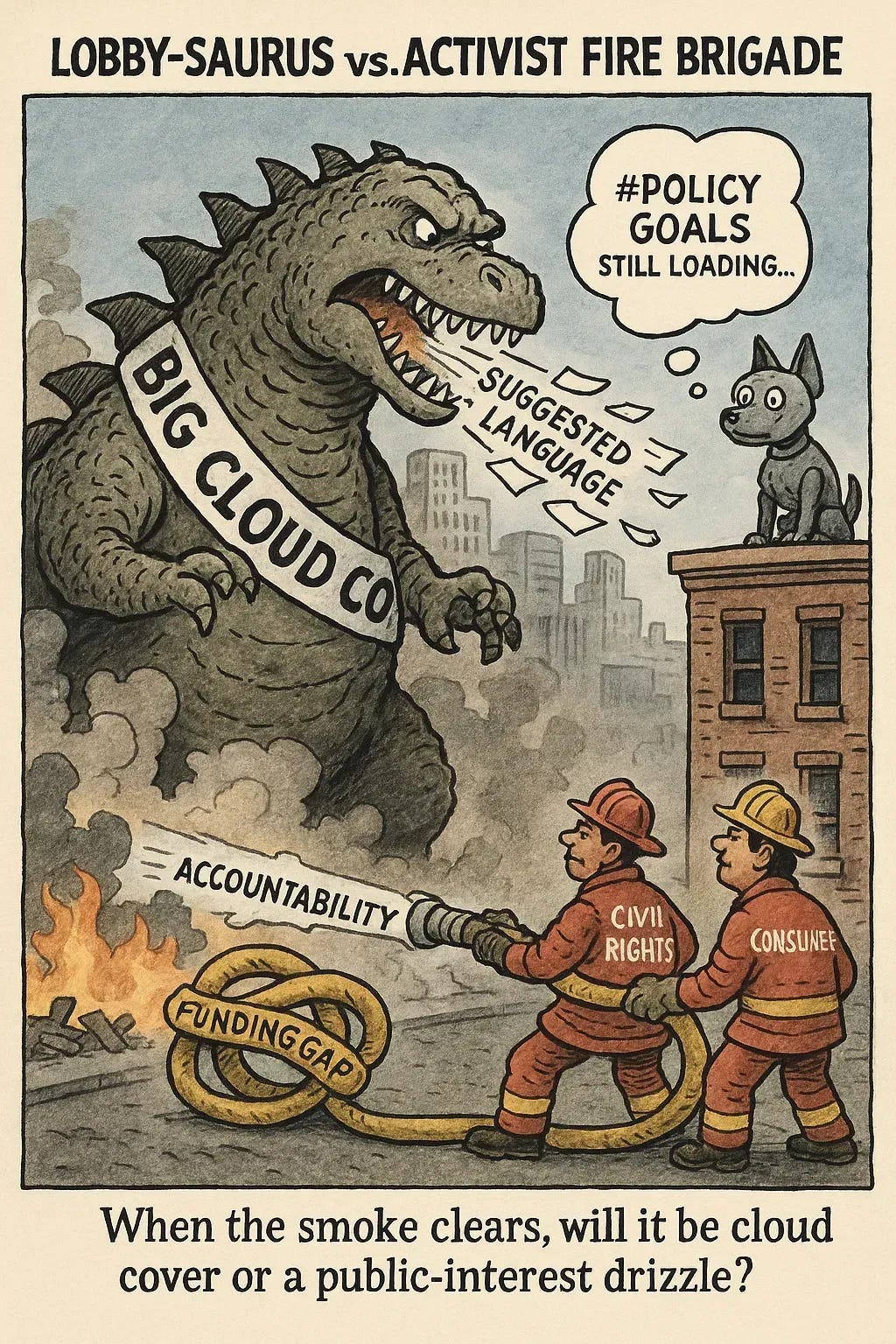The United States just staged the digital-policy equivalent of a three-ring circus—complete with a wrecking ball, bipartisan jugglers, and a governor trying to sweep elephant droppings off the arena floor before anyone slips. Below is your guided tour through the great 2025 AI kerfuffle and why America’s robot overlords are probably face-palming in binary.
Executive Order 14179: When a Wrecking Ball Met a Mainframe
Less than 24 hours after retaking the Oval Office, President Trump bulldozed President Biden’s 2023 “Safe, Secure, and Trustworthy AI” order and 79 other rules by signing Executive Order 14179 – Removing Barriers to American Leadership in Artificial Intelligence.
The new order declares that talk of “responsible AI” is so 2024 and instructs agencies to flush “ideological bias” filters in favor of free-market rocket fuel. Civil-rights groups say, “Great—now Skynet can discriminate faster!” while tech CEOs cheer the sudden disappearance of pesky guardrails and compliance checklists.
Congress Does the Hokey-Pokey (You Regulate In, You Deregulate Out)
TAKE IT DOWN Act – A bipartisan Cruz/Klobuchar special that outlaws non-consensual deep-fake nudes. Congress passed it 100-0 because absolutely no one wants to be revenge-porn deep-faked as a piñata.
CREATE AI Act – A bill to fund a national cloud so every high-school robotics club can train their pet LLM without melting grandma’s laptop.
Futuristic-sounding “accountability” bills – There are at least three, each naming itself something like “INNOVATE & AMELIORATE AI 2.0” while arguing about whether audits should be optional, mandatory, or performed by ChatGPT dressed as Judge Judy.
Congress, in short, is sprinting in both directions simultaneously—proposing new safety rules while the White House fires the referees.
States vs. Feds: The Patchwork Quilt Now Has Chainsaws
California’s Privacy Protection Agency tried to sneak in rules limiting algorithmic screening of job-seekers and patients. Governor Newsom fired off a letter warning the price tag could hit $3.5 billion and crater Silicon Valley’s vibe—translation: “Dude, not cool.”
Meanwhile, Sacramento’s own SB 1047 would force “frontier-model” companies to prove their bots won’t annihilate civilization—unless Washington demolishes the lab first. Result: companies keep a lawyer on each shoulder like morality angels, one whispering “federal pre-emption,” the other “state compliance.”
Lobby-Saurus Rex and the Activist Fire-Brigade
Lobbyists from Big Cloud, Small Cloud, and the Occasionally-Partly-Cloudy Beltway Club now roam the Capitol, arguing that fairness audits are a Marxist ploy while simultaneously asking for bigger research tax credits. Civil-society groups counter that the phrase “ideological bias” is itself ideologically biased, which may cause a recursive loop ending in a committee hearing that never adjourns.
Teachers, Students & Everyone Else Caught in the Crossfire
A leaked draft memo orders agencies to fund AI-training for K-12 teachers
—great news if the lesson plan survives the policy blender. University researchers, meanwhile, worry their grant proposals will have to pass both a national security check for “woke math” and a state check for “non-woke calculus,” which is exactly as fun as it sounds.
So…What Do We Do While the Dust Settles?
1. Assume nothing is permanent. The tempo of U.S. AI law now rivals TikTok trends—yesterday’s legal requirement may be tomorrow’s “whoopsie-daisy.”
2. Document everything. If you build or buy AI, keep receipts; they may double as courtroom exhibits.
3. Laugh to keep from crying. At least until the next executive order mandates comedy-free algorithms.
Welcome to American AI governance in 2025: a dazzling magic act where the rabbit keeps hopping back into the hat, the audience keeps switching seats, and the stage crew is rewriting the script in real time. Grab popcorn—just don’t let the algorithm pick the flavor.







